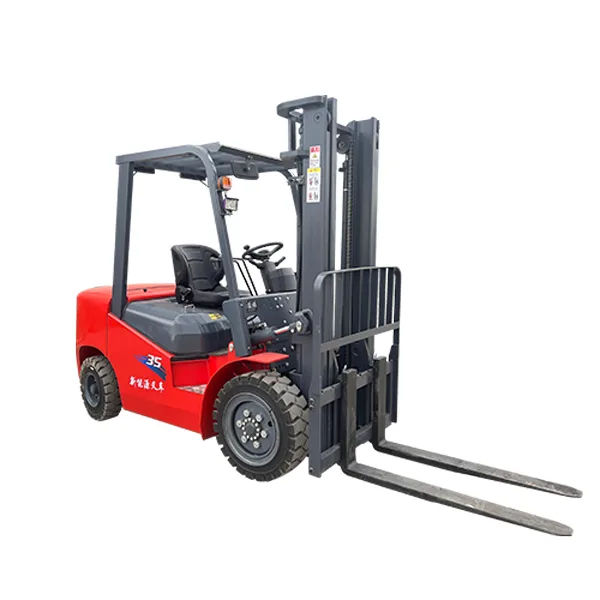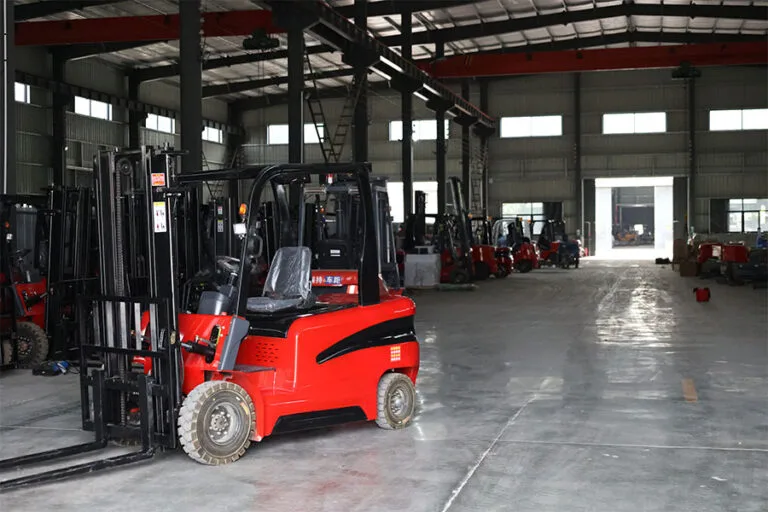I’m thrilled to have you here! Before we dive into the content, let’s stay connected. Join me on my social media platforms for more insights, community engagement, and regular updates. Here’s where you can find me:
📌 Facebook: Shandong Huaying International Trade Co., Ltd.
Now, let’s embark on this journey together. I hope you find the content here not only insightful and engaging but also valuable to your interests. Let’s learn, grow, and connect!
Table of Contents
Introduction
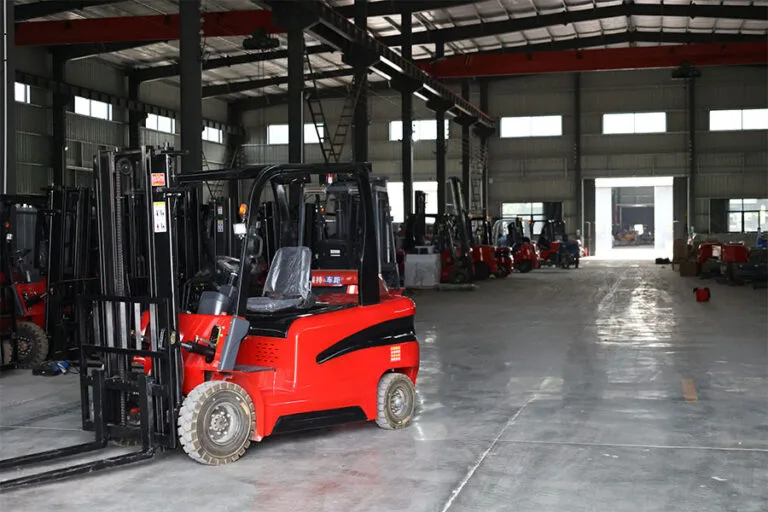
Outdoor forklifts play a pivotal role in industries ranging from construction and agriculture to logistics and warehousing. These machines are designed to handle heavy loads in rugged environments, but their operation in outdoor settings—exposed to weather, uneven terrain, and varied obstacles—poses unique safety challenges. Failing to conduct regular safety checks can lead to equipment damage, operational downtime, and, more importantly, serious injuries or fatalities. This blog outlines seven indispensable safety checks for outdoor forklifts, equipping operators and maintenance teams with the knowledge to mitigate risks and ensure safe, efficient operations.
Tire and Wheel Inspection: The Foundation of Outdoor Forklift Stability
Why Tire Condition is Non-Negotiable for Outdoor Forklifts
Tires are the only point of contact between an outdoor forklift and the ground, making their condition critical for stability, traction, and maneuverability. In outdoor environments—where forklifts navigate gravel, mud, grass, or uneven pavement—worn or damaged tires increase the risk of skidding, tipping, or loss of control. Additionally, improperly inflated tires can cause uneven wear, reduce fuel efficiency, and compromise the forklift’s load-bearing capacity.
Key Inspection Points for Forklift Tires
- Tread Depth: Measure tread depth using a tread gauge. For outdoor forklifts, a minimum tread depth of 2/32 inches is recommended to ensure adequate traction on wet or slippery surfaces.
- Cuts and Punctures: Examine tires for visible damage, such as cuts, bulges, or embedded debris. Even small punctures can lead to sudden deflation, especially when operating on rough terrain.
- Tire Pressure: Check pressure against the manufacturer’s specifications (typically 25-35 PSI for pneumatic tires). Underinflated tires generate excess heat, while overinflated tires reduce shock absorption.
- Wheel Alignment and Damage: Inspect wheels for cracks, bends, or loose lug nuts. Misaligned wheels cause uneven tire wear and affect steering precision.
Case Study: The Impact of Neglected Tire Maintenance
In 2022, a construction site incident involving an outdoor forklift revealed that worn tires were the primary cause of a tip-over accident. The forklift, operating on a muddy slope, lost traction due to bald tires, resulting in $15,000 in equipment damage and a two-week production halt. Post-analysis showed the tires had not been inspected for over three months, despite industry recommendations for weekly checks in harsh conditions.
Brake System Evaluation: Ensuring Control in Outdoor Environments
The Critical Role of Brakes in Outdoor Forklift Operations
Outdoor forklifts often operate on inclines, slippery surfaces, or near pedestrians, making responsive braking essential. Unlike indoor forklifts, outdoor models face additional challenges such as water, mud, or debris affecting brake performance. Faulty brakes can lead to longer stopping distances, loss of control, or collisions, particularly when carrying heavy loads downhill.
Comprehensive Brake System Checks
- Brake Pedal Free Play: Measure the distance the brake pedal travels before engaging the brakes. Excessive free play (typically more than 1 inch) indicates worn brake components or low fluid levels.
- Brake Fluid Level and Condition: Check the master cylinder reservoir for fluid level (should be between “MIN” and “MAX” marks) and inspect fluid for contamination (e.g., dirt, air bubbles, or a burnt odor).
- Brake Lining Wear: Remove wheel hubs to inspect brake linings. Thickness should be at least 1/8 inch; worn linings must be replaced immediately to avoid damage to brake drums or rotors.
- Parking Brake Efficiency: Test the parking brake on a slight incline. The forklift should hold its position without rolling, even when unloaded.
Industry Standards for Brake Performance
| Test Type | Acceptance Criteria | Frequency |
|---|---|---|
| Service Brake Stop Distance | ≤ 10 ft at 10 mph | Daily |
| Parking Brake Holding Force | ≤ 10° incline with full load | Weekly |
| Brake Fluid Pressure | Manufacturer-specified PSI (e.g., 1,200-1,500 PSI) | Monthly |
Hydraulic System Inspection: Preventing Leaks and Failures
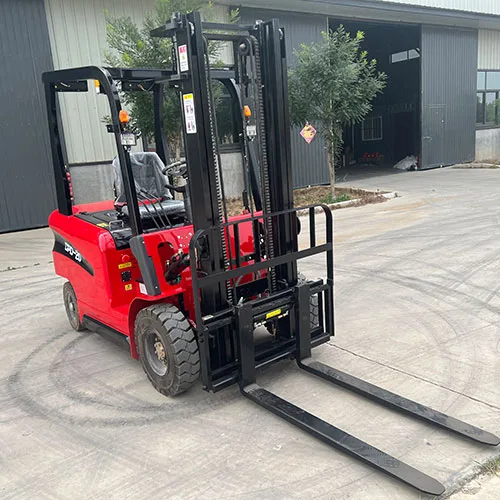

Hydraulics: The Lifeline of Outdoor Forklift Operations
The hydraulic system powers an outdoor forklift’s lifting, tilting, and steering functions. In outdoor settings, hydraulic components are exposed to dust, moisture, and temperature fluctuations, which can cause leaks, reduced pressure, or component failure. A compromised hydraulic system not only affects operational efficiency but also poses safety risks, such as sudden load drops or loss of steering control.
Steps to Inspect Hydraulic Systems
- Leak Detection: Visually inspect hoses, fittings, cylinders, and pumps for oil leaks. Even small leaks can lead to significant fluid loss over time, and hydraulic oil on the ground creates slip hazards.
- Fluid Level and Quality: Check the hydraulic reservoir for proper level (typically 1-2 inches above the dipstick mark) and inspect fluid for discoloration or contamination. Cloudy or gritty fluid indicates the need for filtration or replacement.
- Hydraulic Pressure Tests: Use a pressure gauge to test system pressure at various points (e.g., lift cylinder, tilt cylinder). Pressures should match manufacturer specifications (e.g., 2,000-2,500 PSI for lifting functions).
- Hose and Fitting Condition: Examine hoses for cracks, bulges, or abrasions. Replace hoses showing signs of wear, as aged rubber can burst under pressure, causing sudden system failure.
Environmental Factors Affecting Hydraulics
- Temperature Extremes: In cold weather, hydraulic fluid viscosity increases, reducing system responsiveness. In hot climates, fluid can overheat and break down, losing lubricating properties.
- Dust and Debris: Outdoor operations expose hydraulics to contaminants, which can clog filters and accelerate component wear. Regular filter replacements (every 250-500 hours) are essential.
Overhead Guard and Operator Compartment Checks: Ensuring Operator Safety
The Role of Overhead Guards in Outdoor Forklifts
Outdoor forklifts often operate in areas with falling debris, low-hanging branches, or overhead structures. The overhead guard—a reinforced steel frame above the operator’s seat—is designed to protect against crushing injuries from falling objects. Additionally, the operator compartment must be secure, with functional controls and proper visibility to minimize accidents.
Key Components to Inspect
- Overhead Guard Integrity: Check for cracks, bends, or loose fasteners in the overhead guard. Ensure it is securely attached to the forklift frame and aligned correctly.
- Seat Belt Condition: Inspect seat belts for fraying, buckle functionality, and proper adjustment. In outdoor forklifts, seat belts are crucial for keeping operators in place during rough terrain operation.
- Visibility and Mirrors: Clean and adjust rear-view and side mirrors for optimal visibility. Replace cracked or fogged mirrors, as poor visibility increases the risk of collisions with pedestrians or obstacles.
- Control Panel Functionality: Test all controls (e.g., lift, tilt, horn, lights) for responsiveness. Sticky or unresponsive controls can lead to delayed reactions in emergency situations.
Operator Comfort and Safety Features
- Suspension and Cushioning: Outdoor forklifts should have shock-absorbing seats and suspension systems to reduce operator fatigue on rough terrain. Inspect cushions for wear and suspension components for damage.
- Weather Protection: For open-air forklifts, ensure windshield wipers, roof panels, and rain guards are in good condition to protect operators from the elements, which can impair focus and reaction time.
Lighting and Signaling Systems: Enhancing Visibility in Outdoor Environments
Why Lighting is Essential for Outdoor Forklift Operations
Outdoor forklifts often work in low-light conditions, such as early mornings, evenings, or shaded areas. Proper lighting and signaling systems are vital for ensuring the forklift is visible to other workers and for allowing the operator to see obstacles. Inadequate lighting increases the risk of collisions, especially in busy outdoor worksites with multiple vehicles and pedestrians.
Comprehensive Lighting System Checks
- Headlights and Taillights: Test all front and rear lights for functionality. Replace dim or burnt-out bulbs, and clean lenses to maximize brightness.
- Turn Signals and Hazard Lights: Verify that turn signals flash at the correct rate (60-120 flashes per minute) and that hazard lights activate and deactivate properly.
- Reverse Alarms and Lights: Reverse alarms should sound when the forklift is in reverse, and reverse lights should illuminate the area behind the machine. Ensure alarms are audible over ambient noise (typically ≥ 85 decibels).
- Work Lights and Blue Spot Lights: For nighttime or low-light operations, check work lights mounted on the forklift’s mast or frame. Blue spot lights—projected on the ground ahead of the forklift—alert pedestrians to its presence.
Lighting Standards for Outdoor Forklifts
| Light Type | Function | Industry Requirement |
|---|---|---|
| Headlights | Forward visibility | Minimum 200 ft illumination |
| Taillights | Rear visibility | Visible from 500 ft in daylight |
| Reverse Alarm | Warning signal | Audible within 20 ft radius |
| Blue Spot Light | Pedestrian alert | Projected 10-15 ft ahead of the forklift |
Load Handling Equipment Inspection: Ensuring Safe Material Movement
The Impact of Faulty Load Equipment on Outdoor Forklifts
Outdoor forklifts handle a wide range of loads, from pallets and crates to oversized or irregularly shaped materials. Damaged or improperly maintained load handling equipment—such as forks, extensions, or clamps—can lead to load instability, spillage, or equipment damage. In outdoor environments, uneven terrain exacerbates the risk of load shifts, making thorough inspections critical.
Key Components to Inspect
- Fork Condition: Examine forks for bending, cracking, or excessive wear. Measure fork thickness at the base (should be within 90% of original dimension) and check for uneven wear from misalignment.
- Fork Positioning and Alignment: Ensure forks are evenly spaced and aligned parallel to each other. Misaligned forks can cause load imbalance and increase stress on the forklift’s mast.
- Mast and Chain Wear: Inspect the mast for bent rails or loose bolts, and check chains for stretching, kinking, or broken links. Worn chains can cause sudden load drops or mast instability.
- Attachments and Accessories: For forklifts with specialized attachments (e.g., rotators, sideshifters), verify that all pins, locks, and hydraulic connections are secure and functional.
Load Capacity Verification
- Load Rating Plate: Confirm that the forklift’s load rating plate is legible and matches the equipment’s actual capacity. Overloading is a leading cause of forklift tip-overs, especially on uneven outdoor surfaces.
- Load Stability Checks: Before lifting, assess the load’s center of gravity and secure loose items. Use straps or clamps for unstable loads to prevent shifting during transport.
Engine and Emission System Checks: Ensuring Performance and Compliance

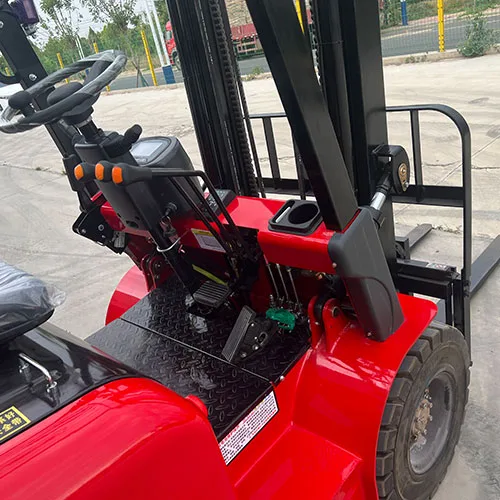
Engine Health in Outdoor Forklift Operations
Outdoor forklifts often rely on internal combustion engines (gas, diesel, or LP gas) to handle heavy loads and rugged terrain. A poorly maintained engine not only reduces performance but can also emit harmful pollutants, violating environmental regulations. In outdoor settings, engines are exposed to dust, moisture, and temperature extremes, increasing the need for regular maintenance.
Engine System Inspection Steps
- Fluid Levels and Conditions: Check engine oil, coolant, and transmission fluid levels. Oil should be changed every 250-500 hours (or as per manufacturer guidelines), and coolant should be tested for freeze protection and pH balance.
- Air Filter Condition: Clean or replace air filters regularly (every 100-200 hours in dusty environments). Clogged filters reduce engine efficiency and can cause excessive wear.
- Belt and Hose Inspection: Examine drive belts for cracks or fraying, and check coolant hoses for leaks or swelling. Worn belts can lead to alternator or water pump failure, while leaking hoses cause engine overheating.
- Emission System Checks: For diesel forklifts, inspect the exhaust system for leaks and ensure the diesel particulate filter (DPF) is clean and functional. Emission tests should be conducted annually to meet environmental standards.
Environmental Considerations
- Noise Emission: Outdoor forklifts must comply with noise regulations (typically ≤ 90 decibels at operator position). Check exhaust mufflers and engine mounts for damage that could increase noise levels.
- Fuel Efficiency: Regular engine maintenance, such as spark plug replacements and fuel system cleanings, improves fuel economy, reducing operational costs and environmental impact.
Applications: How Safety Checks Enhance Outdoor Forklift Operations
Construction Sites: Navigating Complex Terrain
On construction sites, outdoor forklifts transport heavy materials across uneven ground, often near trenches, scaffolding, or other hazards. Regular safety checks—particularly for tires, brakes, and lighting—ensure forklifts can navigate obstacles safely and avoid collisions with workers or equipment. A construction company in Texas reported a 40% reduction in forklift-related incidents after implementing weekly safety checks on their outdoor forklift fleet.
Agricultural Operations: Withstanding Harsh Conditions
In agriculture, outdoor forklifts operate in muddy fields, barns, and storage areas, exposed to dirt, moisture, and organic debris. Hydraulic system inspections are critical here to prevent contamination, while load handling equipment checks ensure safe transport of hay bales, livestock feed, or farming equipment. A dairy farm in Wisconsin credits routine forklift maintenance with a 25% increase in equipment lifespan and reduced downtime during harvest seasons.
Logistics and Warehousing: Ensuring Efficiency in Outdoor Yards
Logistics centers use outdoor forklifts to move containers, pallets, and goods in yard areas. Safety checks for overhead guards, lighting, and signaling systems are essential in these busy environments, where forklifts interact with trucks, pedestrians, and other vehicles. A major port in California implemented daily forklift safety checks and saw a 35% improvement in operational efficiency, as fewer breakdowns meant consistent material handling.
FAQ
How often should outdoor forklifts be safety-checked?
- Daily Checks: Basic inspections (tires, brakes, lights) before each shift.
- Weekly Checks: Comprehensive checks (hydraulics, engine, load equipment) every 40-60 operating hours.
- Monthly/Quarterly Checks: In-depth inspections (engine components, emission systems) by certified technicians.
Can outdoor forklifts be operated in extreme weather?
Yes, but with precautions:
- Cold Weather: Preheat engines, use antifreeze-rated hydraulic fluid, and inspect batteries for cold-weather performance.
- Hot Weather: Monitor engine temperature, ensure proper coolant levels, and check tires for heat-related damage.
- Rain/Snow: Verify brake efficiency, use tires with good traction, and activate all lighting systems.
What are the most common safety check failures in outdoor forklifts?
- Tire Wear: 35% of outdoor forklift incidents relate to worn or underinflated tires.
- Brake System Issues: 25% of failures involve brake lining wear or fluid leaks.
- Hydraulic Leaks: 15% of inspections identify minor hydraulic leaks that could escalate.
Are there specific safety standards for outdoor forklifts?
Yes, key standards include:
- OSHA 1910.178: Forklift operator training and safety requirements in the U.S.
- ISO 21571: Safety principles for industrial trucks, including outdoor models.
- EN 16203: European standards for forklift stability and load capacity.
Conclusion
Conducting regular safety checks on outdoor forklifts is not just a regulatory requirement—it’s a strategic investment in operational safety, efficiency, and longevity. The seven checks outlined in this blog—from tire and brake inspections to engine maintenance and load equipment evaluations—address the unique challenges of outdoor operations, where terrain, weather, and environmental factors amplify risks.
By integrating these checks into a proactive maintenance schedule, businesses can avoid costly breakdowns, reduce downtime, and protect their most valuable assets: their workers and equipment. Remember: an outdoor forklift that’s safe is also a forklift that’s productive. Whether in construction, agriculture, or logistics, prioritizing safety checks ensures that outdoor forklifts continue to power industries while keeping operators and worksites secure.
To recap, the seven essential safety checks form a comprehensive framework for outdoor forklift maintenance:
- Tire and wheel inspection for stability and traction.
- Brake system evaluation for responsive control.
- Hydraulic system checks to prevent leaks and failures.
- Overhead guard and operator compartment inspections for safety.
- Lighting and signaling system tests for visibility.
- Load handling equipment checks to ensure safe material movement.
- Engine and emission system maintenance for performance and compliance.
By making these checks non-negotiable, businesses can transform their outdoor forklift operations from potential liability to a pillar of safe, reliable productivity.

